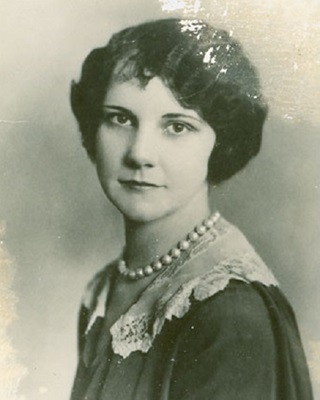1001 Books To Read Before Your Kindle Battery Dies, Part 117![]()
Kate Moore, The Radium Girls: The Dark Story of America's Shining Women, and D.W. Gregory, Radium Girls
In the early 20th Century, American industry was all a-flutter over this new-fangled mineral the Curies discovered in France: radium. Rare and expensive, but highly charged, radium had early commercial uses in patent medicines, cancer treatments, and even cosmetics. But it had its most lucrative boom in luminous paint. Radium paint appeared in wristwatches, dashboard instrument dials, and other technical processes. The women who hand-painted those dials were paid well.
When British author Kate Moore started reading about the radium fad, which happened mostly between the World Wars, she discovered that nearly everything published dealt with the science and the scientists. Nobody ever compiled much about the dial-painters, who were almost exclusively women in their teens and twenties. But the dial-painters paid the highest price for industrial radium, which caused sarcomas, osteoporosis, and a revolting disorder called Radium Jaw.
So Moore decided to close the gap. She pored through countless documents, many of which had remained in storage for decades or never seen outside the family, to reconstruct the lives of blue-collar women frequently overlooked by mainstream historians. Moore reveals a handful of young women whose modest ambitions included the desire to become wives, mothers, artists, or entrepreneurs. History had other plans, turning them into spokespeople for the changing times.
Radium dial-painters in Orange, New Jersey, and Ottawa, Illinois, used techniques first pioneered in painting expensive bone china. The painters mostly started work around age fourteen or fifteen; Moore says one started painting aged only eleven. They used camel-hair brushes, and to accurately paint small numerals, they got their brushes to a fine point by putting the bristles in their mouths. Thus they ingested microscopic amounts of radium.
But saying “microscopic amounts” does the poisoning an injustice. Radium bonded with calcium in their bones, where it emitted constant radiation with a half-life beyond a millennium. Years after leaving their jobs, many women began experiencing the first common symptom: tooth decay. But their teeth were only the external symptom. Their entire lower jaws, exposed directly to radium, were rotting out of their mouths. Many witnessed their mouths crumble.
Though the women had were fortunate to find doctors who believed them, and helped them seek treatment, the medical establishment refused to believe radium was dangerous. Not just medicine, either—their employers, backed with armies of attorneys, stonewalled the legal system to prevent having to accept responsibility for their former workers. Using legal maneuvers that sound suspiciously familiar a century later, they abused the courts to remain rich and untouchable.
The companies, U.S. Radium Corporation and the Radium Dial Company, shared a common technique: deny and stall the proceedings until the women died, almost all painfully and ignominiously. If they outlived the women, the cases lacked a plaintiff, and culpability went away. Thus these companies pioneered the literal process of privileging their profits over workers’ lives, an approach that remains commonplace today.
 |
| Grace Fryer, unofficial captain of the New Jersey radium girls |
Dial-painters, who were again almost entirely women, began working as teenagers around 1917; nobody was held legally responsible for their suffering and death until 1938. The decades-long slog through medical and legal delays presaged the hurdles faced by many working-class Americans in subsequent decades, suffering injuries caused by silica, heavy metals, hydrocarbons, and other pollutants. The dial-painters simply came first, thus paving the way for others.
Worse, industrial stonewalling techniques remain commonplace today. Though the dial-painters’ ordeal led to America instituting worker safety regulations, many companies now simply move manufacturing to unregulated economies in Latin America or the Pacific Rim. There, they repeat the pattern of hiring teenagers with slim, lithe fingers, working them to capacity, then denying responsibility for their workplace injuries, which sometimes manifest only years later.
Playwright D.W. Gregory recounts the New Jersey dial-painters, whose suffering came first, and whose legal struggles captivated an American public basking in the glow of that other innovation, the wire service. Gregory presents a snappy, fast-paced memory play, depicting one painter, Grace Fryer, and her struggle to receive her day in court. Backed by volunteers and her fellow dial-painters, Grace militarizes national media to get public opinion on her side.
Despite what you’d expect, Gregory’s play was produced fifteen years before Moore’s book appeared; Moore cites Gregory in her bibliography. Gregory’s version is both quicker and more intimate, eschewing the technical details and knowledge Moore lavishes. One could read these as two versions of the same story: one personal and close, the other inclusive and exhaustive. They’re two ways of looking at an event that changed America’s relationship with the moneyed class.


No comments:
Post a Comment